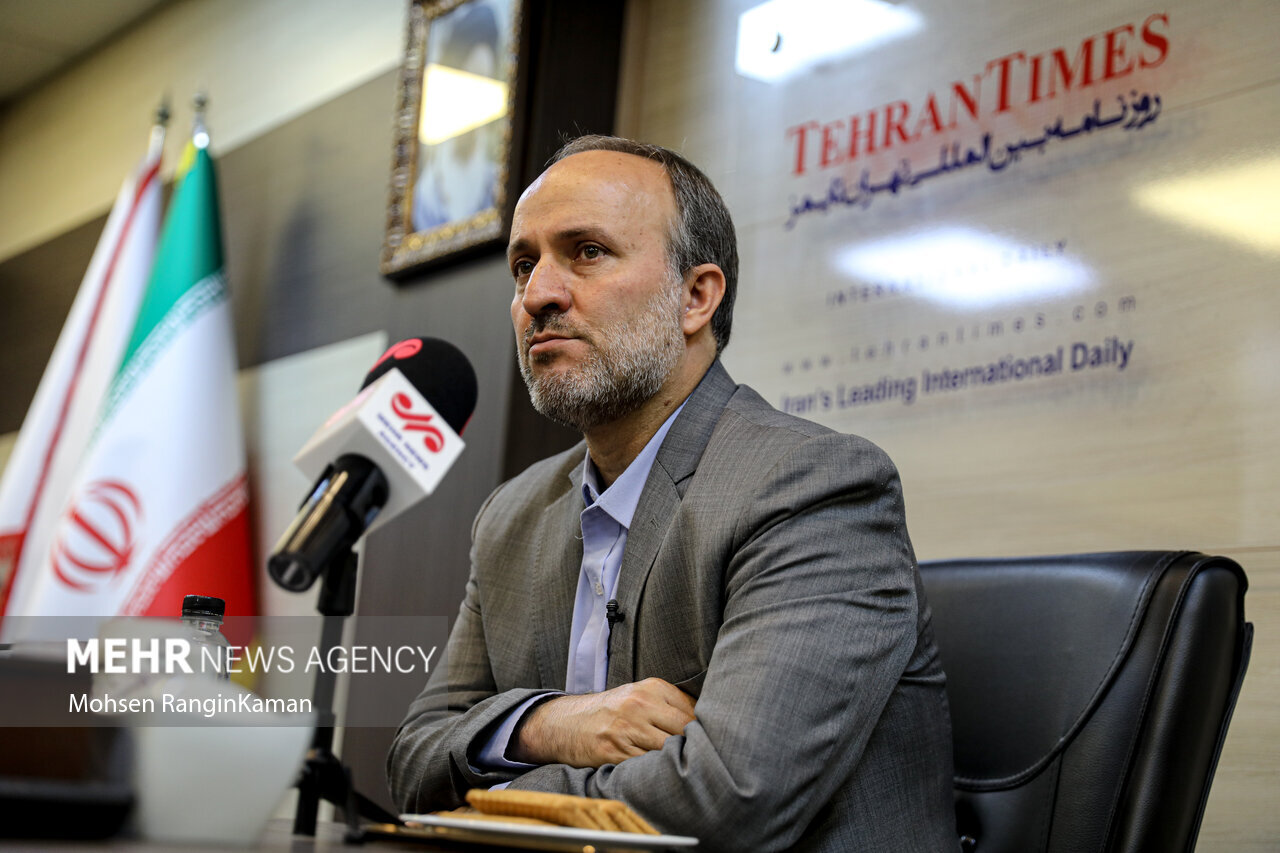Great achievements made in technology and innovation: deputy science minister

TEHRAN – Hashem Dadashpour, the deputy science minister for student affairs, says the country’s capacities in the fields of technology and innovation have increased greatly thanks to the infrastructures that have been formed in recent years.
“This issue has caused Iran's position to be very reliable in the world rankings.”
In an exclusive interview with the Tehran Times, Dadashpour expounded on science diplomacy and priorities of the higher education sector to attract more foreign university students.
Increasing the number of foreign students is one of the ministry’s priorities in line with the goal of science diplomacy. How many foreign students are currently studying in the country's universities and what is the mechanism for granting permission to universities to attract more foreign students?
The country’s capacities in the fields of science, technology, and innovation have greatly increased thanks to the infrastructures that have been formed in recent years. This issue has caused Iran's position to be very reliable in the world rankings.
Traditionally, universities that played a role in this field were from countries such as the United States, Canada, Australia, and some other certain countries.
But in the last decade, developments have happened in the world in the field of science that caused non-English speaking countries also make great achievements in this field.
Germany, Italy, Turkey, Russia, and China are among the top 10 countries in the world in attracting international students. When we compare the capacities of these countries with Iran, we see that there is no significant difference.
The difference is because we have just started to grow in this field and it is natural that it will take time to stabilize and improve the capacities that have been formed.
Very good capacities have been formed in the country, but we have not been able to accelerate the admission of international students in comparison with capacities.
Therefore, the problem here is that even though Iran is among the most prestigious countries in the world in the field of science and technology, this capacity has not been used to attract international students.
According to unofficial statistics, about 108,000 international students are studying at the country's universities.
When we compare the country’s capacities with the capacities that some countries in the world have created, we find out that we still have a long way to go to be among the top 10 countries in the world.
One of the programs of the Ministry of Science, which is referred to as science diplomacy, aims to attract around 250,000 international students in a period of 3 to 4 years.
The country's universities are currently preparing themselves to accomplish the task, but when it comes to the diversity of foreign students in the country, the figure is low.
For the time being, most international students are from Iraq, Afghanistan, Syria, Lebanon, Pakistan, India, Turkey, and some other countries such as Nigeria, and this number is not very significant in terms of the diversity of nationality.
International students from 93 countries are studying in Iran, and of course, Iraq and Afghanistan have the most students in Iran.
We expect that, firstly, we will approach the admission of 250,000 foreign students, and secondly, we will be able to increase the capacity for admitting students from more countries.
In this regard, we have prepared a document under the title "Science Diplomacy Document for Students". This document is supposed to solve a series of infrastructural and legal barriers through which we can help facilitate the admission of international students.
Of course, inter-organizational coordination is very important there because it is not only the student affairs organization that is involved in attracting international students, although we are considered the main core of the work.
But in the field of obtaining visas, other organizations are actually involved. Coordination and synergy with these organizations will help us achieve this important goal.
What policies are going to be adopted to attract more foreign students?
The Student Affairs Organization is a regulatory or policy-making organization that does its best to define and create a role for itself in the field of regulation.
For example, last year we organized the international student admission festival for the first time, where we highlighted at least 3 areas. That is, as a regulator, we held the "Soraya National Award" for the country's top universities in this field.
We organized another festival for those who are somehow active in the field of university student admission. We have also defined an award to support universities that increase the number of international students year after year.
We defined various indicators and said that a university that admits more students than last year increases its diversity of nationality compared to last year and increases the percentage of international students compared to its total students, will be under our support.
We are planning to hold a large international exhibition in Tehran from November 14-17 with the aim of introducing the attractions of studying in Iran.
On the other hand, we had almost no institutions admitting foreign students in the country until last year. We had institutions for sending students abroad, but we had no institutions for admission. We have so far given permission to about 75 institutions for admitting foreign students.
MG
